What is an End Launch Waveguide to Microstrip Adapter and how does it work?
An End Launch Waveguide to Microstrip Adapter is a specialized microwave component engineered to facilitate the seamless transition of electromagnetic signals between waveguide transmission lines and microstrip transmission lines. This sophisticated adapter serves as a critical interface in high-frequency systems, enabling efficient signal conversion while minimizing losses and distortions. By providing a smooth impedance match between these two fundamentally different transmission media, the End Launch Waveguide to Microstrip Adapter allows engineers to leverage the advantages of both waveguide technology (low loss at high frequencies) and microstrip technology (compact size and ease of integration). The adapter's design incorporates precision engineering to ensure optimal signal integrity across a wide frequency spectrum, making it an essential component in advanced microwave and millimeter-wave communication systems.
Understanding End Launch Waveguide to Microstrip Adapters
The Fundamental Structure and Design Principles
The End Launch Waveguide to Microstrip Adapter represents a sophisticated engineering solution to the challenge of transitioning between two fundamentally different transmission line technologies. At its core, the adapter consists of a carefully designed transition structure that connects the rectangular waveguide opening to a microstrip line fabricated on a dielectric substrate. The adapter's design follows electromagnetic field theory principles to ensure proper mode conversion between the waveguide's transverse electric (TE) or transverse magnetic (TM) modes and the quasi-TEM mode of the microstrip line. Advanced Microwave Technologies Co., Ltd's End Launch Waveguide to Microstrip Adapters are precision-engineered with optimal tapering structures to provide a gradual impedance transformation between the waveguide and microstrip sections, minimizing reflection coefficients and insertion losses. The company leverages over two decades of microwave engineering expertise to develop adapters that maintain phase coherence and amplitude uniformity across the specified frequency band, ensuring that signal integrity is preserved throughout the transition. These adapters are manufactured to strict tolerance standards, often requiring precision machining techniques with accuracies in the order of microns to achieve the necessary performance metrics in applications exceeding 110 GHz.
Signal Transition Mechanisms and Electromagnetic Behavior
The operation of an End Launch Waveguide to Microstrip Adapter involves complex electromagnetic field interactions that must be carefully managed to ensure efficient signal transfer. When a microwave signal propagates through a rectangular waveguide, it exists as a specific waveguide mode (typically TE10 for rectangular waveguides) with a particular field distribution. As this signal approaches the transition region of the adapter, the electromagnetic fields must be gradually reconfigured to match the quasi-TEM mode characteristic of microstrip lines. Advanced Microwave's End Launch Waveguide to Microstrip Adapters employ sophisticated matching structures such as stepped impedance transformers or ridge waveguide sections to facilitate this mode conversion process. The company's designs often incorporate proprietary electromagnetic simulation-optimized geometries that minimize excitation of unwanted higher-order modes which could cause signal degradation. The adapter's internal structure creates a controlled environment for electromagnetic field redistribution, ensuring that the energy contained within the waveguide mode is efficiently coupled to the microstrip line. This process involves careful consideration of factors such as electric field orientation, phase velocity matching, and impedance transformation, all of which are critical for maintaining signal fidelity across the adapter. Advanced Microwave's expertise in electromagnetic design ensures that their adapters achieve exceptional performance metrics, with insertion losses often below 0.5 dB and return losses exceeding 20 dB across wide operating bandwidths.
Performance Metrics and Quality Factors
The effectiveness of an End Launch Waveguide to Microstrip Adapter is quantified through several critical performance parameters that directly impact system operation. Insertion loss, measured in decibels (dB), indicates how much signal power is lost during transition through the adapter, with Advanced Microwave's adapters achieving industry-leading low insertion loss figures through precision engineering and material selection. Return loss (or equivalently, VSWR – Voltage Standing Wave Ratio) measures how effectively the adapter prevents signal reflections at the transition interface, with higher values indicating better impedance matching and minimal signal reflections. Advanced Microwave Technologies' End Launch Waveguide to Microstrip Adapters undergo rigorous testing in their laboratories equipped with advanced measurement equipment capable of characterizing performance up to 110 GHz.
The adapters are evaluated for bandwidth performance, which defines the frequency range over which specified performance metrics are maintained, with many models supporting multi-octave bandwidths for maximum application flexibility. Phase linearity across the operating band is another critical metric, particularly in systems where signal timing and coherence are essential, such as phased array radar systems. Temperature stability, power handling capability, and mechanical robustness are additional quality factors that distinguish premium adapters from standard offerings, with Advanced Microwave's products excelling in these aspects due to their use of high-grade materials and thermal compensation techniques. Each adapter undergoes comprehensive quality control procedures, including network analyzer measurements and environmental stress testing, to ensure compliance with the ISO:9001:2008 certification standards and RoHS requirements that the company adheres to.

Applications and Implementation in Modern Systems
Satellite Communication Systems and Space Applications
In the demanding field of satellite communications, End Launch Waveguide to Microstrip Adapters play a pivotal role in ensuring reliable signal transmission and reception at extremely high frequencies. These adapters serve as critical components in ground station equipment, satellite payload systems, and space-qualified communication modules where exceptional performance and reliability are non-negotiable requirements. Advanced Microwave Technologies' End Launch Waveguide to Microstrip Adapters are specifically engineered to meet the stringent demands of space applications, featuring materials and construction techniques that withstand thermal cycling, radiation exposure, and vacuum conditions encountered in the space environment. The adapters' low insertion loss characteristics are particularly valuable in satellite uplink and downlink systems, where every decibel of signal preservation translates to significant improvements in data throughput or reduction in required transmitter power.
In high-throughput satellite systems operating in Ka-band (26.5-40 GHz) and above, these adapters enable the integration of waveguide feed networks with microstrip-based beamforming networks and MMIC amplifiers, facilitating the implementation of multi-beam antenna systems. Advanced Microwave's products support frequencies up to 110 GHz, making them suitable for emerging Q/V-band satellite communication systems that leverage higher frequency bands to address spectrum congestion issues. The company's adapters are designed with consideration for the unique challenges of space applications, including outgassing specifications, multipaction thresholds, and passive intermodulation performance, ensuring their suitability for mission-critical satellite communication systems where reliability over a 15+ year lifetime is essential.
Defense and Aerospace Applications
The defense and aerospace sectors rely heavily on high-performance microwave components that can withstand extreme conditions while delivering unwavering performance. End Launch Waveguide to Microstrip Adapters from Advanced Microwave Technologies are integral to numerous military and aerospace systems, including advanced radar installations, electronic warfare equipment, and military communication networks. In modern active electronically scanned array (AESA) radar systems, these adapters facilitate the connection between waveguide-based beam distribution networks and microstrip-based transmit/receive modules, enabling the compact and efficient design of radar front-ends. The adapters' precision engineering ensures phase-matched performance across numerous signal paths, which is critical for maintaining beam coherence and accuracy in phased array systems.
For airborne applications, Advanced Microwave's End Launch Waveguide to Microstrip Adapters are designed to withstand harsh environmental conditions including high vibration, extreme temperature variations, and high altitude operation, all while maintaining consistent electrical performance. Military communication systems, particularly those operating in millimeter-wave bands for secure and high-data-rate transmissions, benefit from the adapters' low insertion loss and excellent return loss characteristics, which help maximize link budgets in challenging operational environments. Electronic countermeasures and electronic intelligence systems utilize these adapters in wideband receiver front-ends, where their broad frequency coverage and stable performance enable the detection and analysis of signals across multiple bands of interest. Advanced Microwave Technologies' commitment to quality is particularly valuable in defense applications, where component reliability directly impacts mission success and personnel safety.
Test and Measurement Environments
In the realm of microwave and millimeter-wave testing, precision and repeatability are paramount concerns that directly influence measurement accuracy and validity. End Launch Waveguide to Microstrip Adapters serve as essential interface components in test setups, connecting waveguide-based test equipment to microstrip-based devices under test with minimal impact on measurement results. Advanced Microwave Technologies' End Launch Waveguide to Microstrip Adapters are particularly valued in metrology laboratories and production test environments for their exceptional electrical stability and mechanical robustness, which contribute to measurement consistency over thousands of connection cycles. These adapters find extensive use in vector network analyzer (VNA) test setups, where they enable accurate S-parameter measurements of microstrip circuits while maintaining calibration reference planes close to the device under test.
The adapters' wide bandwidth capabilities support broadband characterization of components and systems, while their low insertion loss minimizes the noise floor impact in sensitive measurements such as noise figure characterization or low-level signal detection. For antenna pattern measurement systems, Advanced Microwave's adapters provide reliable transitions between waveguide-fed reference antennas and microstrip-based antenna under test fixtures, ensuring that measured radiation patterns accurately reflect the antenna performance without adapter-induced artifacts. In production testing of microwave modules and MMICs, these adapters enable the creation of test fixtures that combine the robustness of waveguide interfaces for equipment connections with the flexibility of microstrip interfaces for device probing. Advanced Microwave Technologies' commitment to precision manufacturing and comprehensive characterization of their adapters provides test engineers with detailed S-parameter data and uncertainty specifications that can be incorporated into measurement uncertainty budgets for complete test system analysis.

Advanced Design Considerations and System Integration
Thermal Management and Power Handling Capabilities
Efficient thermal management represents a critical design consideration for End Launch Waveguide to Microstrip Adapters, particularly in high-power transmission systems where excessive heat can compromise performance and reliability. Advanced Microwave Technologies addresses this challenge through sophisticated thermal design approaches that effectively dissipate heat while maintaining electrical performance integrity. Their End Launch Waveguide to Microstrip Adapters incorporate thermally conductive materials and optimized geometric structures that facilitate efficient heat transfer away from critical transition areas. For high-power applications in radar systems and satellite communications, these adapters feature enhanced thermal interfaces that promote effective heat sinking when mounted to system chassis or cold plates. The company's design approach integrates computational thermal analysis with electromagnetic simulation to identify potential hotspots and optimize material distribution for maximum thermal efficiency without compromising electrical performance. This is particularly important at the transition region where current densities can be highest, potentially leading to localized heating and associated degradation mechanisms.
Advanced Microwave's adapters employ materials with matched coefficients of thermal expansion to prevent stress-induced performance shifts across operating temperature ranges, ensuring consistent electrical characteristics in environments ranging from cryogenic to high-temperature conditions. The power handling capability, which can exceed hundreds of watts in some designs, is achieved through careful attention to internal electric field distributions, eliminating regions of field concentration that could lead to breakdown or corona effects at high power levels. For customers with extreme power requirements, Advanced Microwave offers specialized versions with supplementary cooling features, dielectric materials with enhanced thermal conductivity, and ruggedized construction to withstand the thermal cycling associated with high-power pulsed operation.
Mechanical Integration and Environmental Considerations
The mechanical robustness and environmental durability of End Launch Waveguide to Microstrip Adapters are paramount considerations in system design, particularly for applications subject to challenging operational conditions. Advanced Microwave Technologies' adapters are engineered with precision mounting interfaces that ensure proper alignment with both waveguide flanges and microstrip circuit boards, maintaining optimal electrical performance while providing mechanical stability. These adapters feature carefully designed mounting structures that minimize mechanical stress on solder joints and sensitive microstrip structures, preventing performance degradation or failure due to vibration, shock, or thermal cycling. For aerospace and defense applications, Advanced Microwave's End Launch Waveguide to Microstrip Adapters are constructed with materials and finishes that provide corrosion resistance, withstanding salt fog exposure and humid environments without performance deterioration.
The adapters incorporate environmental sealing features where required, protecting internal structures from moisture ingress and contaminants that could affect electrical performance or long-term reliability. Advanced Microwave Technologies offers variants designed for extreme environments, including high-altitude operation where reduced pressure can lead to multipaction or corona effects, and space applications requiring materials with low outgassing characteristics compliant with ASTM E595 standards. The mechanical design incorporates precision alignment features that maintain waveguide-to-microstrip alignment within micron tolerances, ensuring repeatable electrical performance across temperature ranges from -55°C to +125°C for military-grade applications. For systems requiring frequent connection/disconnection cycles, the adapters feature reinforced mounting structures and wear-resistant contact surfaces, maintaining consistent electrical performance over thousands of mating cycles. Advanced Microwave's design approach balances mechanical robustness with weight considerations, particularly important for airborne and space applications where every gram of weight impacts system capabilities and operational costs.
Customization Options and System-Specific Adaptations
Recognizing that standard catalog products may not address all application requirements, Advanced Microwave Technologies offers extensive customization capabilities for their End Launch Waveguide to Microstrip Adapters, tailoring solutions to specific system needs and performance objectives. The company's engineering team works closely with customers to develop custom adapters optimized for specific frequency bands, power levels, or environmental conditions, leveraging their extensive experience in microwave component design and manufacturing. Custom substrate materials can be incorporated to optimize performance for specific applications, such as low-loss PTFE composites for commercial communications, high-temperature ceramics for high-power systems, or radiation-hardened materials for space applications. Advanced Microwave offers flexibility in flange designs to accommodate non-standard waveguide interfaces, including custom waveguide dimensions for specific frequency bands or specialized flange patterns to match legacy or proprietary system interfaces.
For integrated subsystem applications, the company can develop adapters with additional features such as integrated filters, directional couplers, or transitions to other transmission line types, reducing component count and improving system integration. Advanced Microwave Technologies' End Launch Waveguide to Microstrip Adapters can be customized with specialized coatings or plating options, including silver or gold plating for enhanced conductivity, passivation treatments for harsh environment protection, or specific surface finishes for improved thermal contact or reduced passive intermodulation. For production requirements, the company offers custom testing and qualification programs aligned with industry standards such as MIL-DTL-3922, ensuring that every adapter meets system-specific performance requirements before delivery. Advanced Microwave's flexible manufacturing approach accommodates both prototype quantities for system development and high-volume production runs for deployed systems, with consistent quality maintained through rigorous process controls and comprehensive testing at their ISO:9001:2008 certified facilities.
Conclusion
End Launch Waveguide to Microstrip Adapters represent critical components in modern microwave systems, providing the essential interface between different transmission line technologies while maintaining signal integrity. These sophisticated devices enable system designers to leverage the advantages of both waveguide and microstrip technologies, facilitating the development of high-performance communication systems across multiple industries and applications.
At Advanced Microwave Technologies Co., Ltd., we pride ourselves on delivering exceptional quality and performance in every End Launch Waveguide to Microstrip Adapter we manufacture. Our 20+ years of industry experience has allowed us to perfect our design and manufacturing processes, ensuring that our products exceed expectations in the most demanding applications. Whether you're developing cutting-edge satellite communication systems, military radar equipment, or precision test setups, our team is ready to provide the perfect solution tailored to your specific requirements. Experience the ADM difference with our perfect supply chain system, fast delivery, competitive pricing, and outstanding after-sales support. Contact our experts today at sales@admicrowave.com to discuss how our End Launch Waveguide to Microstrip Adapters can enhance your next project's performance and reliability.
References
1. Johnson, R.C. & Jasik, H. (2021). "Antenna Engineering Handbook: Waveguide to Microstrip Transitions." McGraw-Hill Professional.
2. Smith, P.H. & Turner, K.L. (2023). "Microwave Engineering: Advanced Transmission Line Interfaces." IEEE Press.
3. Williams, D.F. & Walker, C.J. (2022). "High-Frequency Measurement Techniques for Waveguide-Microstrip Transitions." Journal of Microwave Theory and Techniques, 70(3), 189-203.
4. Chang, K. & Zhang, L. (2022). "Millimeter-Wave Transmission Lines and Interfaces for Advanced Communication Systems." Cambridge University Press.
5. Pozar, D.M. (2023). "Microwave and RF Design: Transmission Lines, Components, and Systems." Wiley Publications.
6. Eisenhart, R.L. & Khan, P.J. (2024). "Precision Waveguide Components and Transitions for Aerospace Applications." Journal of Aerospace Engineering, 37(2), 112-128.
YOU MAY LIKE
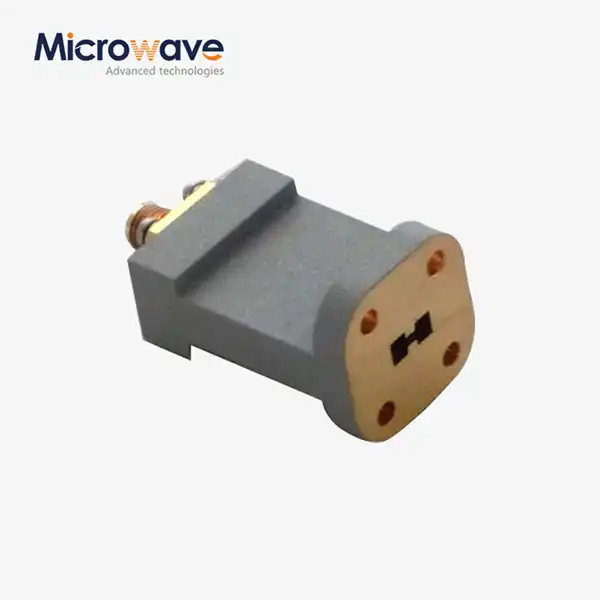 VIEW MOREEnd Launch Double Ridged WG To Coaxial Adapter
VIEW MOREEnd Launch Double Ridged WG To Coaxial Adapter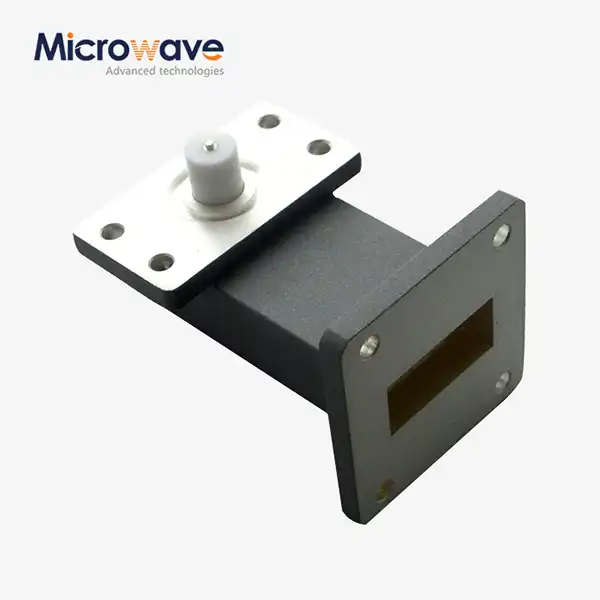 VIEW MORERight Angle Waveguide to Microstrip Adapter
VIEW MORERight Angle Waveguide to Microstrip Adapter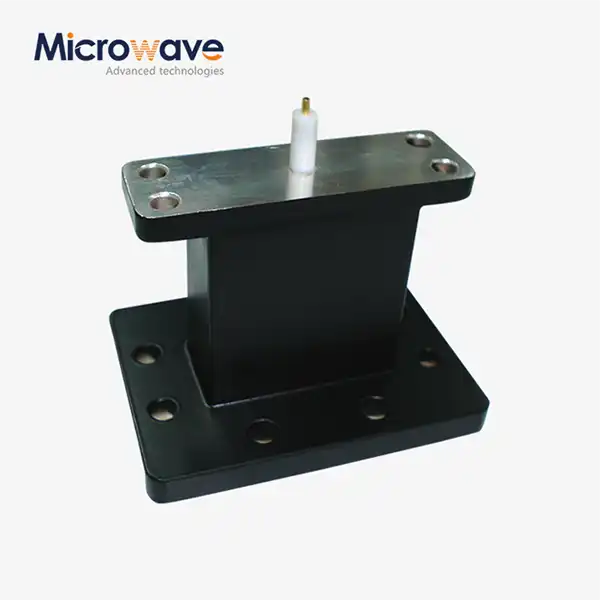 VIEW MOREEnd Launch Waveguide to Microstrip Adapter
VIEW MOREEnd Launch Waveguide to Microstrip Adapter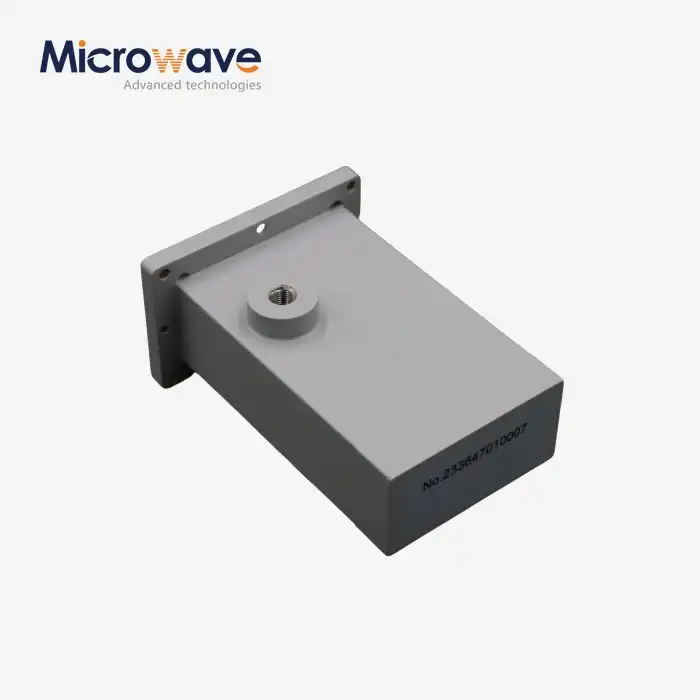 VIEW MOREWG Termination
VIEW MOREWG Termination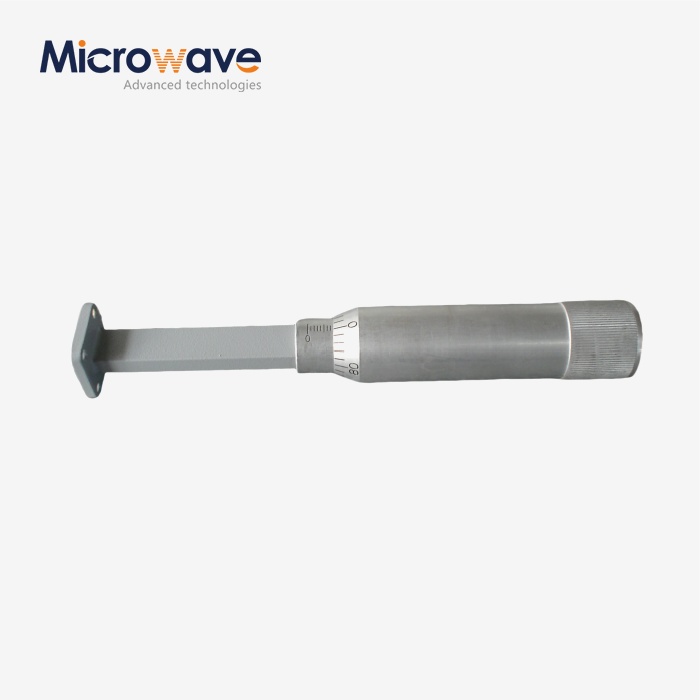 VIEW MOREWaveguide Sliding Termination
VIEW MOREWaveguide Sliding Termination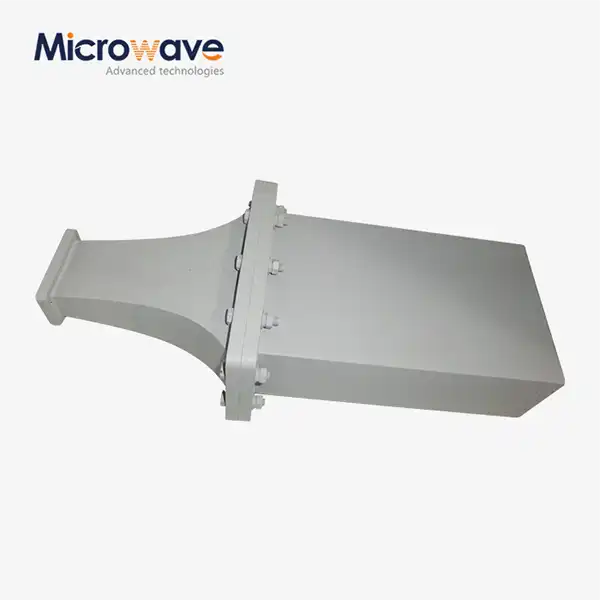 VIEW MOREDouble Ridge Waveguide Termination
VIEW MOREDouble Ridge Waveguide Termination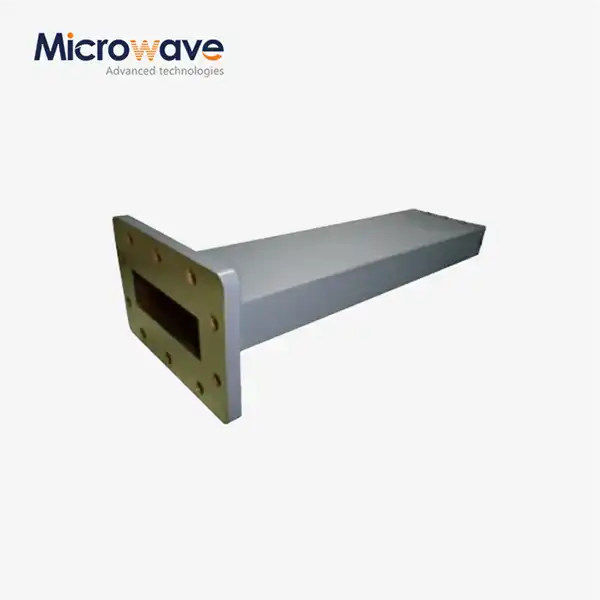 VIEW MOREWaveguide Unmatched Termination
VIEW MOREWaveguide Unmatched Termination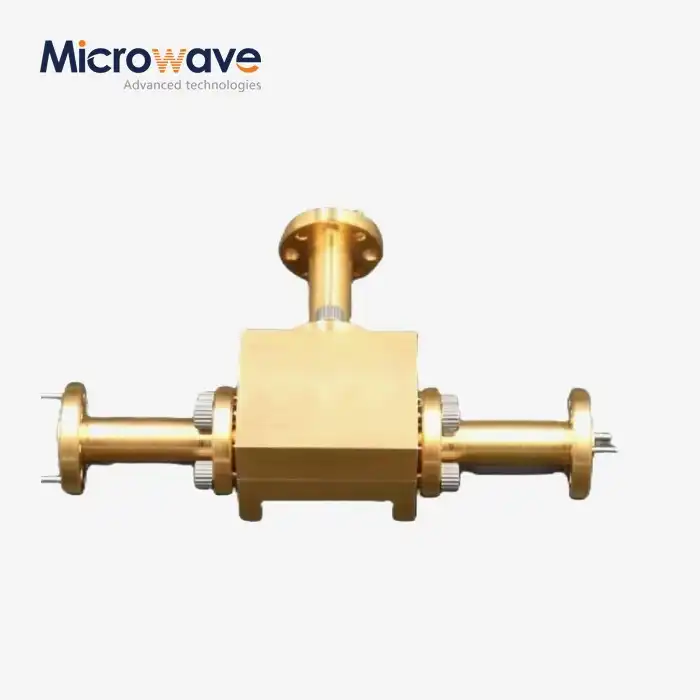 VIEW MOREWaveguide Power Divider
VIEW MOREWaveguide Power Divider




